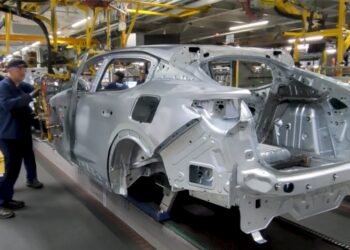With enormous success in the Chinese market, Xiaomi now seems determined to focus on internationalization, and in this regard, it is working to identify the interest of various markets.
Chinese media reports that Xiaomi has created a working group aimed at marketing its models in foreign markets and is hiring professionals in areas such as market research, project management, and electric vehicle after-sales engineers. However, nothing is known regarding which markets Xiaomi will target outside its home country, nor when it will begin its operations.
However, it is expected that Xiaomi’s expansion will include the European market, as in July, the CEO of the Chinese brand, Lei Jun, admitted at an exhibition in Paris that Xiaomi’s goal is to sell its models in Europe before 2030.

Remember that the Chinese brand launched its first car, the SU7, in China in March of this year, a model that quickly became a sales success.
The SU7 is a 100% electric sedan, based on Xiaomi’s Modena platform, which is designed to support electrical architectures of 400 volts and 800 volts, as well as transmission systems with one or two motors.
Equipped with electric motors developed in-house by Xiaomi, the SU7 is available in the Chinese market, with two versions: the entry-level model features a single electric motor installed on the rear axle, delivering 300 hp and 400 Nm of torque, powered by a 73.6 kWh battery. This configuration allows it to accelerate from 0 to 100 km/h in 5.28 seconds and reach a top speed of 210 km/h, with a range of 628 km to 668 km on the CLTC cycle.

The more powerful version is the SU7 Max, which utilizes two electric motors, one per axle, providing all-wheel drive, with a total output of 645 hp and 838 Nm of torque. It uses a 101 kWh battery supplied by CATL, allowing for a range of up to 800 km, as well as accelerating from 0 to 100 km/h in just 2.7 seconds and reaching a top speed of 265 km/h.
In 2025, Xiaomi will launch the new YU7, a fully electric SUV, which is expected to feature a dual motor configuration: a front motor with 295 hp combined with a rear motor generating 386 hp, resulting in a combined output of 681 hp.
Powering the two electric motors will be batteries from CATL; however, Xiaomi has not yet disclosed the battery specifications.













